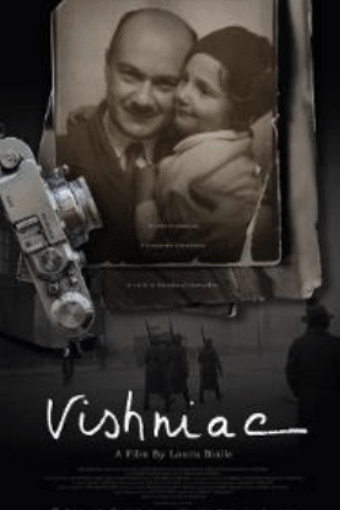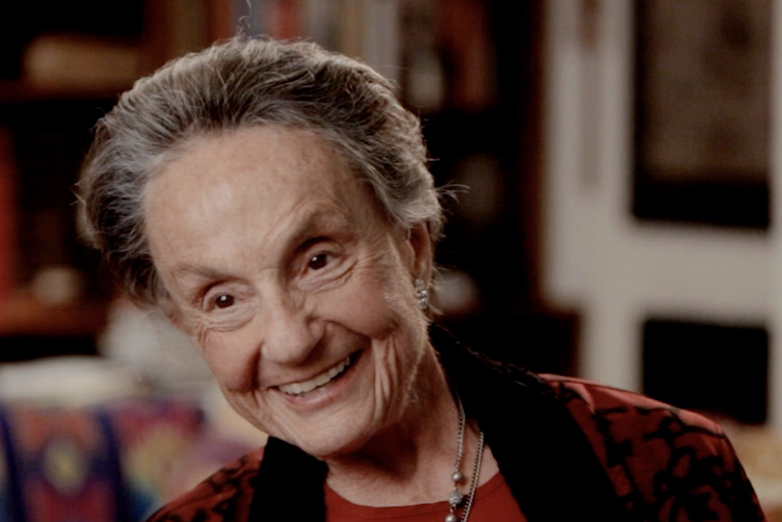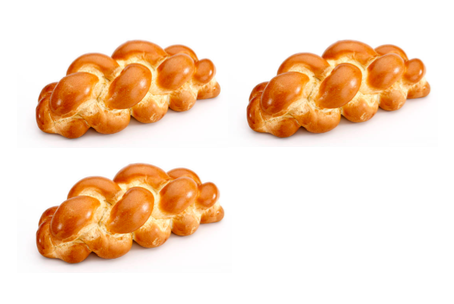Through the Lens of his Camera – Vishniac
By Sue Weston and Susan Rosenbluth, Two Sues on the Aisle
Photographer Roman Vishnic used his camera to document the world around him. Vishniac captured the world through the lens of his camera. It is fitting that his story is captured in the documentary Vishniac, by filmmaker Laura Bialis. The documentary Vishniaca, narrated by his daughter, Mara Vishniac Kohn, turns the camera around to showcase her father, his works, and his life.

Gift of Mara Vishniac Kohn, The Magnes Collection of Jewish Art and Life, University of California, Berkeley, © The Magnes Collection of Jewish Art and Life, UC Berkeley
While you might not be familiar with the name Roman Vishnic, you have probably seen his photographs. He is best known for documenting Jewish life in pre-war Eastern Europe from 1935 through 1938. The American Joint Distribution Committee commissioned his work which raised funds and awareness of conditions in Europe. Vishniac’s camera recorded these communities that would be wiped out less than a decade later.
These images are memorable.
A Legacy of Photographs
Vishniac photographed Eastern European shtetls and Weimar-era Berlin documenting the Nazi rise to power. He used Mara as a prop to give him the ability to capture otherwise forbidden images. In a photograph taken in 1933 Berlin then seven-year-old Mara is positioned outside a shop displaying instruments to gauge the shape of a skull issuing certificates of ‘Aryanism’.
After the war, Vishniac took pictures documenting Berlin in ruins, including images of Jewish children in Displaced Persons camps, and the bombed-out ruins in Berlin. The intimacy with his subjects made his photographs different, creating a connection that brought them to life. Vishniac said ‘The closer you get, the more beautiful it is.” This closeness and affection for his subjects make the faces he captured emotionally compelling.
A Consummate Storyteller
Vishniac was brilliant and charismatic. He was a free-spirited storyteller who had the tendency to exaggerate his accomplishments, claiming to be fluent in 14 languages and to hold seven university degrees. His eccentricity got him a job with Life magazine using a microscope to capture living organisms and positioned Vishniac to become a pioneer in the field of microscopic photography. His “Living Biology” series was the first film depicting life through a microscope.
A Personal Perspective
Filmmaker Laura Bialis worked closely with Vishniac’s daughter, Mara Vishniac Kohn (until she passed at age 92) to develop a unique perspective. The film shows her father as an accomplished photographer as well as a complex person who was genuinely interested in finding beauty through casual observation of nature and culture.

Gift of Mara Vishniac Kohn, The Magnes Collection of Jewish Art and Life, University of California, Berkeley, © The Magnes Collection of Jewish Art and Life, UC Berkeley
The photographs of Roman Vishnic embrace and preserve the Jewish experience in Eastern Europe. He documented faces, people, and conditions, providing future generations with a visual history. His pictures help fill our knowledge gap by preserving images and paying tribute to the generations who perished in Eastern Europe.
******
Two Sues on the Aisle bases its ratings on how many challahs (1-5) it pays to buy (rather than make) to see the play, show, film, book, or exhibit being reviewed.
Vishniaca received three Challahs
Run Time: 93 minutes








